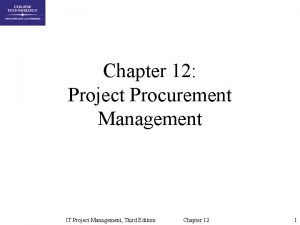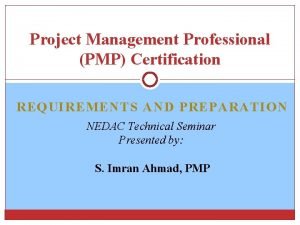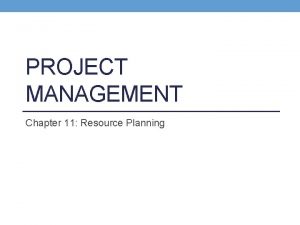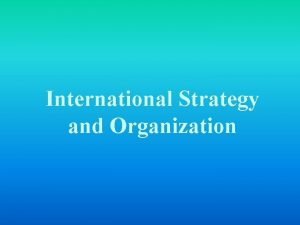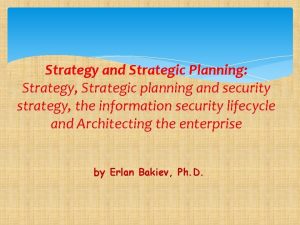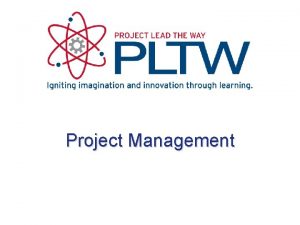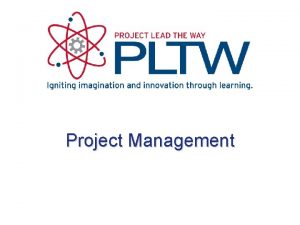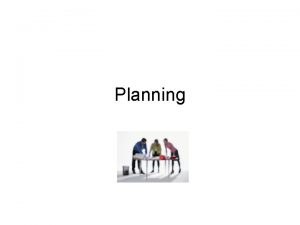Strategy Project Planning Project management l l Project














- Slides: 14

Strategy Project Planning

Project management l l Project management is the activity of planning and coordinating resources and tasks to achieve the project goals. Resources include people, equipment and spaces.

Project management l l Working on a project typically involves: • many people • many different tasks. Project Management guarantees: • Efficient use of time, • Monetary savings • high-quality

Work Breakdown Structure (WBS) l l The WBS is the hierarchical list of the project's phases, tasks and milestones • Phase: A group of related tasks that completes a major step in a project. • Task: An activity that has a beginning and an end. • Milestone: A reference point marking a major event in a project. Scope: The combination of all tasks, and the work required to accomplish them. Budget: The estimated cost of a project. http: //office. microsoft. com/enus/assistance/HA 011361531033. aspx#Step%201

Phase: A group of related tasks that completes a major step in a project. Task: An activity that has a beginning and an end.

Work Breakdown Structure (WBS) l The 100% rule • The rule applies at all levels within the hierarchy: the sum of the work at the “child” level must equal 100% of the work represented by the “parent” and the WBS should not include any work that falls outside the actual scope of the project, that is, it cannot contain more than 100% of the work Wilmer Arellano © 2010

Example

Research Project Example (Missing 100% rule)

Project Timeline/ Sequential Tasks l l Tasks are sequential when they are dependent on the output of another task. These because the dependencies impose a sequential order in which the tasks must be completed. We do not necessarily mean that the later task cannot be started before the earlier one has been completed

Project Timeline/ Parallel task l Two tasks are parallel when they are both dependent on the same task but are independent of each other.

Milestones l Examples: l Each Milestone should be explained with a sentence or two • Prototype Implementation. • Testing. • Documentation. • Demonstration.

PERT Charts (program evaluation and review technique) l PERT (program evaluation and review technique) charts explicitly represent both dependencies and timing. . Wilmer Arellano © 2010

l l Using the free option, install software from: http: //www. ganttproject. biz/ Follow the tutorial atl: https: //youtu. be/5 r. HCSa 5 ad 34

& Questions Answer s
 Traditional project management vs modern project management
Traditional project management vs modern project management Software project management lectures
Software project management lectures Solicitation planning in project management
Solicitation planning in project management Resource loading meaning
Resource loading meaning Project management planning
Project management planning Writing a strategy
Writing a strategy Resource planning definition in project management
Resource planning definition in project management Project planning and management lecture notes ppt
Project planning and management lecture notes ppt Corporate strategy vs business strategy
Corporate strategy vs business strategy Transnational strategy vs global strategy
Transnational strategy vs global strategy Chase demand strategy
Chase demand strategy Multidomestic strategy vs transnational strategy
Multidomestic strategy vs transnational strategy Aligning hr strategy with business strategy
Aligning hr strategy with business strategy Porter’s diamond of national advantage
Porter’s diamond of national advantage Strategy executing process
Strategy executing process


